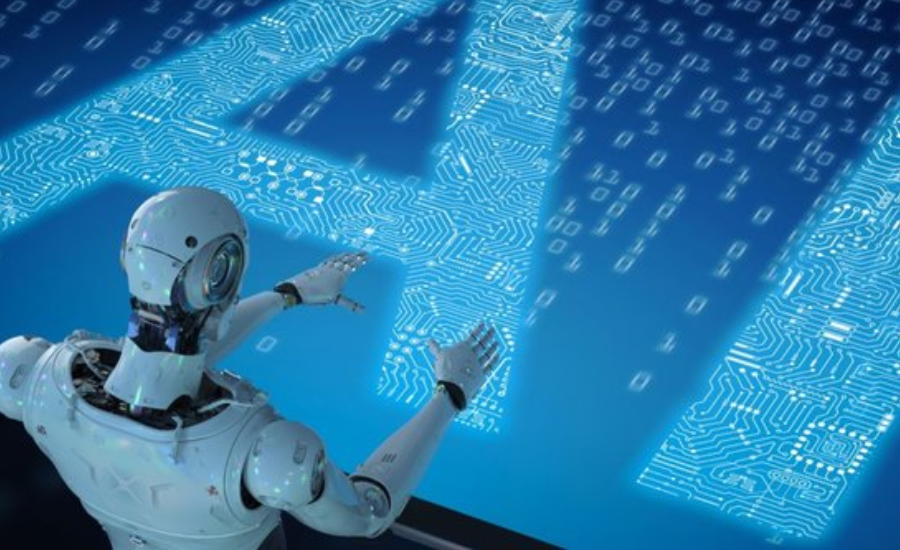Introduction
Artificial Intelligence Acronyms By Alaikas (AI) and machine learning are transforming a myriad of industries, spearheading groundbreaking advancements across technology. As we explore this dynamic field, we turn our attention to the intricate realm of AI acronyms curated by Alaikas. This guide will provide an in-depth look at these acronyms, elucidating their definitions, highlighting their advantages, and addressing the challenges they present. By understanding these terms, readers will gain a clearer insight into how AI terminology shapes industry practices and innovations.
AI and Machine Learning: Pillars of Contemporary Technology

Artificial Intelligence (AI) and machine learning have emerged as foundational elements in today’s technological landscape, influencing a diverse array of industries. These advanced technologies are reshaping sectors such as healthcare, finance, and beyond, driving innovation and efficiency. AI encompasses systems capable of executing tasks that traditionally necessitate human cognitive abilities, such as problem-solving and decision-making. Within this broader field, machine learning stands out as a specialized domain where algorithms enable systems to autonomously improve and adapt by analyzing and learning from data. This continuous learning process enhances the capabilities of AI, leading to more intelligent and responsive technology solutions.
Recent Breakthroughs in AI and Machine Learning
Revolutionizing Healthcare
Artificial Intelligence and machine learning are making significant strides in the healthcare sector. Modern AI algorithms have the capability to predict various diseases and tailor treatments to individual patients. For instance, advanced AI systems are now being employed to identify early indicators of conditions such as cancer, enabling proactive and timely medical interventions. This not only enhances diagnostic accuracy but also optimizes treatment plans, ultimately leading to better patient outcomes.
Transformations in the Financial Industry
In the financial realm, AI is revolutionizing fraud detection and customer service. Sophisticated machine learning models are utilized to scrutinize transaction patterns, helping to uncover fraudulent activities with greater precision. Additionally, AI-powered chatbots are enhancing customer service by providing real-time support and resolving queries swiftly. These advancements contribute to more secure and efficient banking experiences, transforming how financial institutions operate.
Advancements in Autonomous Vehicles
The field of autonomous vehicles is witnessing remarkable progress, with companies such as Tesla and Waymo leading the charge. These organizations are leveraging AI to develop self-driving cars that can navigate roads and make decisions independently of human input. This cutting-edge technology holds the potential to significantly reduce traffic accidents and enhance overall transportation efficiency, paving the way for safer and more streamlined travel.
Looking Ahead: The Future of AI and Machine Learning
The trajectory of AI and machine learning points toward a future rich with potential. Ongoing research continues to uncover novel applications, from the creation of smart cities to the development of sophisticated robotics. As these technologies advance, they promise to bring about transformative innovations that will reshape our daily lives and redefine our interactions with technology. The continuous evolution of AI is set to introduce even more groundbreaking solutions, enhancing both the efficiency and quality of various aspects of life.
Exploring AI Acronyms by Alaikas

Decoding AI Acronyms by Alaikas
Alaikas has created a specialized collection of acronyms designed to streamline the understanding of complex concepts in artificial intelligence. These acronyms serve as a shorthand for intricate AI terminology, simplifying communication and comprehension within the field. By standardizing these abbreviations, Alaikas—an influential figure in AI research—has facilitated clearer and more efficient discourse among professionals and enthusiasts alike. This comprehensive set of acronyms not only enhances the accessibility of AI knowledge but also supports effective engagement with advanced technologies.
Illustrative Examples of AI Acronyms by Alaikas
NLP (Natural Language Processing)
Natural Language Processing (NLP) is a specialized area within artificial intelligence that focuses on enabling computers to understand and interact using human language. Alaikas leverages NLP to advance various applications, including machine translation, sentiment analysis, and voice recognition. By improving these systems, Alaikas enhances the ability of machines to interpret and respond to human communication more accurately and effectively.
CNN (Convolutional Neural Network)
Convolutional Neural Networks (CNNs) represent a type of deep learning algorithm predominantly used for analyzing visual data such as images and videos. Alaikas has refined CNN technology to boost its performance in detecting and categorizing objects and patterns within visual content. These enhancements contribute to more precise and reliable image and video recognition capabilities.
RPA (Robotic Process Automation)
Robotic Process Automation (RPA) involves the use of automated software tools to perform repetitive and rule-based tasks. Alaikas’s RPA solutions are designed to optimize business operations by minimizing the need for manual input. This technology streamlines processes, enhances operational efficiency, and reduces the likelihood of human error in routine tasks.
Application of AI Acronyms by Alaikas
Alaikas seamlessly integrates these acronyms into a variety of AI-driven solutions. For instance, NLP algorithms are employed to enhance chatbot interactions, improving customer service by providing more intuitive and responsive support. CNNs are utilized in advanced security systems for accurate facial recognition, contributing to enhanced security measures. RPA is applied to administrative functions, facilitating greater efficiency and reducing the burden of routine tasks.
Real-World Applications and Industry Adoption
The influence of AI acronyms developed by Alaikas is evident across leading technology companies. Google incorporates NLP to refine its search engine algorithms, improving search accuracy and relevance. Amazon employs CNNs within its product recommendation systems, enhancing the personalization of shopping experiences. Financial institutions utilize RPA to automate repetitive transactions, streamlining operations and boosting efficiency. These real-world examples underscore the critical role of AI acronyms in advancing technology and shaping industry practices.
Advantages and Disadvantages of AI Acronyms by Alaikas
Advantages

Clarifies Complex Concepts
Alaikas’s AI acronyms are designed to make intricate artificial intelligence concepts more accessible. By condensing complex terminology into straightforward abbreviations, these acronyms help demystify sophisticated ideas and facilitate easier comprehension for users across various levels of expertise.
Improves Professional Communication
Standardizing acronyms within the AI field enhances communication among industry professionals. By employing a consistent set of abbreviations, practitioners can more effectively share information and collaborate, minimizing the risk of misinterpretation and ensuring a unified understanding of technical terms.
Facilitates Learning and Efficiency
For newcomers to the AI field, Alaikas’s acronyms offer a valuable shortcut to mastering essential concepts. They serve as quick reference tools, aiding in the faster assimilation of AI knowledge and promoting greater efficiency in learning and application of AI principles.
Disadvantages
Overwhelming for Beginners
The extensive array of AI acronyms can be overwhelming for those new to the field. The process of learning and memorizing numerous abbreviations may initially seem daunting, potentially hindering the learning curve for novices.
Risk of Miscommunication
Without clear definitions, acronyms can lead to misunderstandings. Various organizations might use identical acronyms to represent different concepts, which can cause confusion and miscommunication if the context is not well established.
Potential for Oversimplification
While acronyms help simplify complex ideas, there is a risk of oversimplification. Relying on abbreviations might obscure the nuanced understanding of the fundamental principles underlying AI technologies, potentially limiting a deeper grasp of the subject matter.
Progress Report on Artificial Intelligence Acronyms by Alaikas

Yearly Milestones and Achievements
2018: Foundational Development
In 2018, Alaikas embarked on the journey of creating specialized AI acronyms aimed at demystifying artificial intelligence terminology. This initial phase focused on developing a set of abbreviations to make complex AI concepts more accessible and easier to understand.
2019: Adoption by Industry Leaders
By 2019, Alaikas’s AI acronyms had gained traction among leading technology companies. Major players in the tech industry began incorporating these acronyms into their systems and documentation, signifying a shift towards standardized AI terminology.
2020: Advancement of Algorithms
The year 2020 saw significant advancements with the introduction of enhanced algorithms. Notable improvements were made to Natural Language Processing (NLP), Convolutional Neural Networks (CNNs), and Robotic Process Automation (RPA). These upgrades contributed to more accurate and efficient AI applications.
2021: Broadened Use Cases
In 2021, Alaikas’s acronyms were integrated into a wider range of applications, extending beyond initial use cases to include sectors such as healthcare and finance. This expansion demonstrated the versatility and growing importance of these acronyms in various industries.
2022: Achieving Global Recognition
By 2022, Alaikas’s AI acronyms had achieved global recognition and were becoming standard terminology across the industry. This milestone reflected the widespread acceptance and adoption of these abbreviations in AI research and practice worldwide.
2023: Ongoing Enhancements
The progress continued in 2023 with ongoing efforts to refine existing acronyms and develop new ones. This commitment to continuous improvement ensures that Alaikas’s acronyms remain relevant and effective in representing the latest advancements in artificial intelligence.
Summary
Artificial Intelligence (AI) and machine learning have become central to technological progress, significantly impacting various sectors such as healthcare, finance, and transportation. Alaikas has played a pivotal role in this field by developing a specialized set of AI acronyms designed to simplify complex terminology and enhance communication within the industry. These acronyms have facilitated clearer understanding and efficient dialogue among professionals. Key advancements include improved algorithms for Natural Language Processing (NLP), Convolutional Neural Networks (CNNs), and Robotic Process Automation (RPA), as well as the integration of these technologies into diverse applications. The continuous evolution and global recognition of Alaikas’s AI acronyms underscore their importance in driving innovation and shaping industry practices.
FAQs
1. What are AI acronyms by Alaikas?
AI acronyms by Alaikas refer to a set of standardized abbreviations developed to simplify and communicate complex artificial intelligence concepts. These acronyms help clarify intricate terms and enhance understanding and efficiency in the AI field.
2. How do AI acronyms by Alaikas benefit the industry?
These acronyms make advanced AI concepts more accessible, improve communication among professionals by standardizing terminology, and aid newcomers in quickly learning essential concepts. They also support efficient engagement with AI technologies across various applications.
3. What recent advancements have been made in AI and machine learning?
Recent advancements include significant improvements in healthcare diagnostics through AI, enhanced fraud detection and customer service in finance, and progress in autonomous vehicle technology. These developments showcase the transformative impact of AI on various industries.
4. What challenges are associated with using AI acronyms?
Challenges include the potential for overwhelming beginners with numerous abbreviations, risks of miscommunication if acronyms are not clearly defined, and the possibility of oversimplifying complex concepts, which may limit a deeper understanding of AI principles.
5. What milestones have been achieved in the development of AI acronyms by Alaikas?
Milestones include the foundational development of AI acronyms in 2018, their adoption by industry leaders in 2019, advancements in algorithms in 2020, broadened applications in 2021, global recognition by 2022, and ongoing enhancements in 2023.
6. How are AI acronyms by Alaikas used in real-world applications?
These acronyms are integrated into various AI-driven solutions, such as improving chatbot interactions through NLP, enhancing facial recognition in security systems with CNNs, and streamlining administrative tasks with RPA. Major companies like Google, Amazon, and banks use these acronyms to enhance their technologies and operations.
Don’t Miss Out—Read Now: The United State

